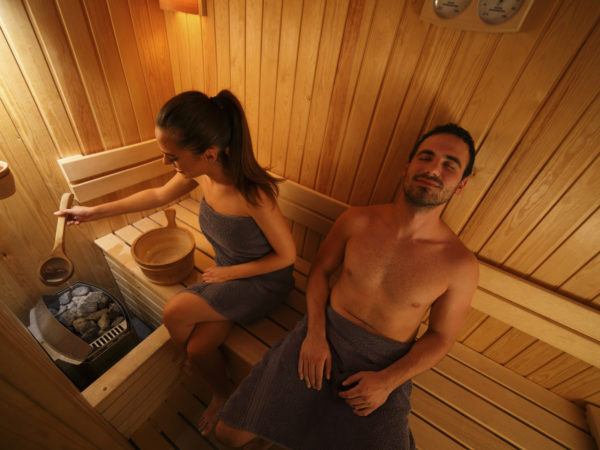A Better Way to Sweat?
I am thinking of buying a sauna and have been looking at far-infrared saunas. Are they as effective as they claim, and most importantly are they safe?
Andrew Weil, M.D. | August 24, 2006

Traditional Finnish saunas provide dry and wet heat – first dry, usually from a wood stove that heats the air temperature to 200 degrees Fahrenheit, and then wet when water is splashed on the stove to create steam. Many electric saunas in our part of the world fail to provide a steam option, giving you only dry heat. Whatever the type of heat, saunas promote sweating. The Finns say a proper sauna draws about a liter of water from the body per hour. Sweating helps the body rid itself of excess sodium, drugs, and some toxins, thereby reducing the workload of the liver. It also improves general circulation.
The heat of a sauna (or steam bath) boosts the temperature of the surface of your body, causing blood vessels to dilate and circulation in the skin to increase. As resistance to blood flow through the veins and capillaries drops, blood pressure goes down. In response, heartbeat increases to keep blood pressure normal. The heat can also ease muscle stiffness, and you may notice an increase in energy, a decrease in stress, and improved sleep.
Far-infrared saunas are a variation on the theme. Instead of a stove, a special heater generates infrared radiation, said to warm the body in the same way as sunlight. In fact, I understand that the infrared radiation warms the body rather than the surrounding air. I haven’t tried a far-infrared sauna so I can’t say whether the experience is any better than a traditional one. (Sauna purists say that infrared is not as invigorating or relaxing.) Some proponents say you can sweat three times more than in a traditional sauna or steam room and claim that the “deep penetration” of the infrared heat stimulates greater release of “stored fats and toxins.” I’ve also seen claims that a session in a far-infrared sauna is the equivalent of the cardiovascular workout you would get from running 10 to 15 kilometers. I’m skeptical of that. (Remember that any weight you lose in a sauna will come right back once you replace the fluids that you’ve sweated out.)
I prefer a sauna in which heat comes from heated rocks, allowing you to put water on the rocks to create steam, because I find that the dry air of electric saunas irritates my upper respiratory tract. I’m unaware of any specific dangers of far-infrared saunas, but I would caution you to go easy on any type of sweat-inducing heat (sauna or steam bath) if you have high blood pressure or heart problems. The main risk of either a sauna or steam bath is overdoing it – you can faint from overheating. Be sure to drink plenty of water, before, during and after your sauna (or steam bath). And be sure to limit the time you spend in the heat – 10 to 20 minutes is usually enough.
Andrew Weil, M.D.









